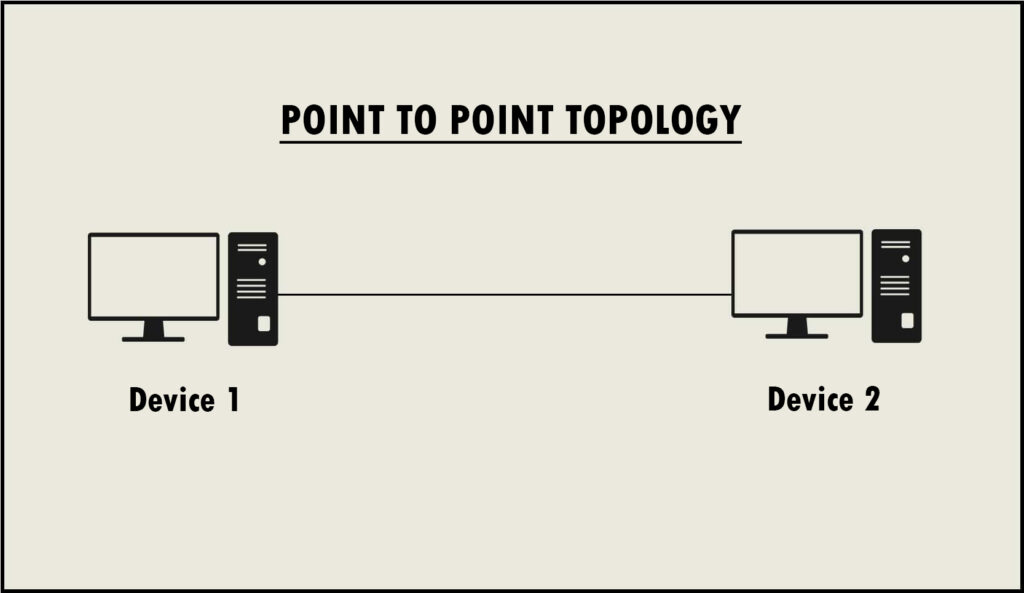Definition of point to point topology
“A point to point topology is a way of connecting two nodes (computer, laptop, mobile device, router, hub or switch) through a common medium. The medium can be wired cable or wireless satellite.”

In this topology, two nodes are usually placed near each other. The node can also be a router or hub. In the case of a router or hub, one connection is made between a computer and a router, hub or switch.
The communication between two nodes can be either simplex, half-duplex or full-duplex. In the simplex mode of communication, only one node can send data. In half-duplex, both devices (nodes) can send data but one at a time. In full-duplex, both devices can send data at a time.
The medium to make a connection can be either microwave-based, dedicated fibre or leased line.
Characteristics of point to point topology
Some features of point to point topology are:-
- High bandwidth
- Easy replacement of node
- Connection speed is fast
- Troubleshooting is easy
- Maintenance is easy
- Low latency rate
- The mode of connection is simple
- Low cost
Example of point to point topology
- The connection between TV and remote control
- The connection between AC and remote control
- Connecting two computers in LAN (local area network
- The connection between a router to a router
- The connection between a router and a workstation




